People born in November have a choice of two beautiful gemstones – Citrine and Topaz. Appreciated for its lovely yellow and yellow-orange tones, Citrine has, over the ages, often been mistaken for Topaz, which occurs in tones from colourless to yellow to orange to bright pink.
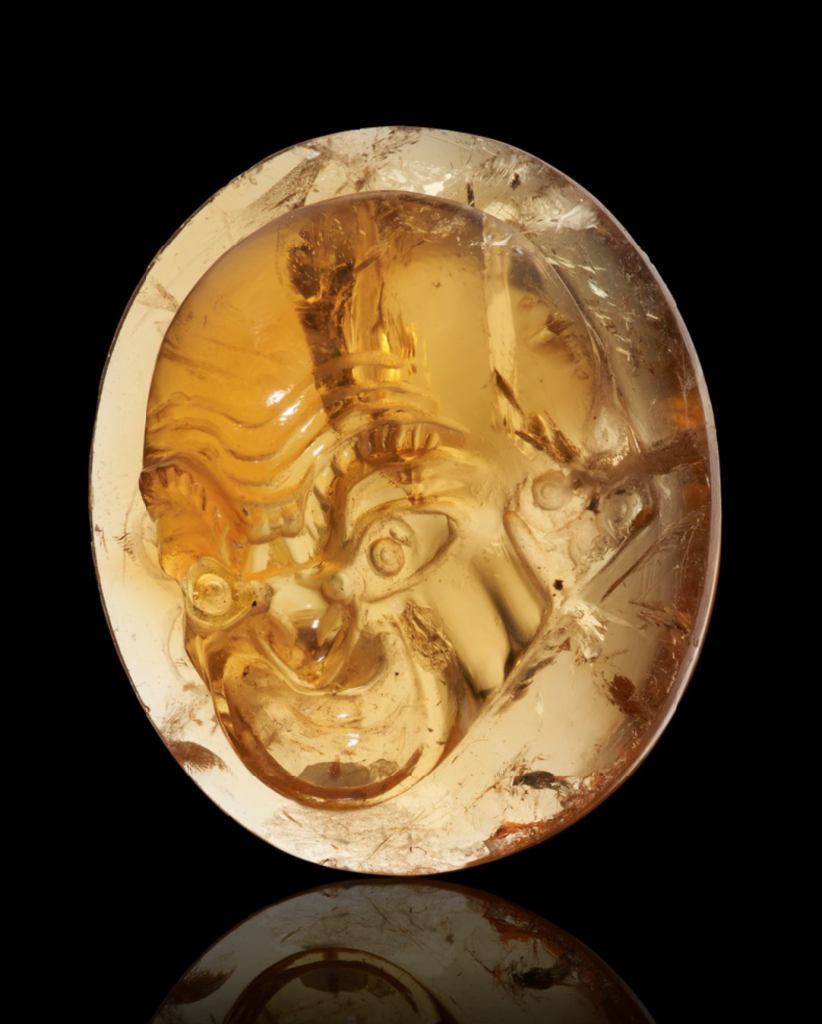
1/13 A Roman carved citrine cameo with a theatre mask, Republican Period, circa 1st century BCE. It sold at Christie’s in April 2022 for US$75,600. (Photo: Christie’s)
Sunny citrine
Citrine has been used in jewellery and adornment for millennia. The early Egyptians wore the gem as talismans, while the ancient Greeks and Romans carved it with iconic images. The yellow gem was a widespread element in Victorian jewellery and its popularity continues today. Its name is thought to come from the Latin word citrina, meaning yellow.
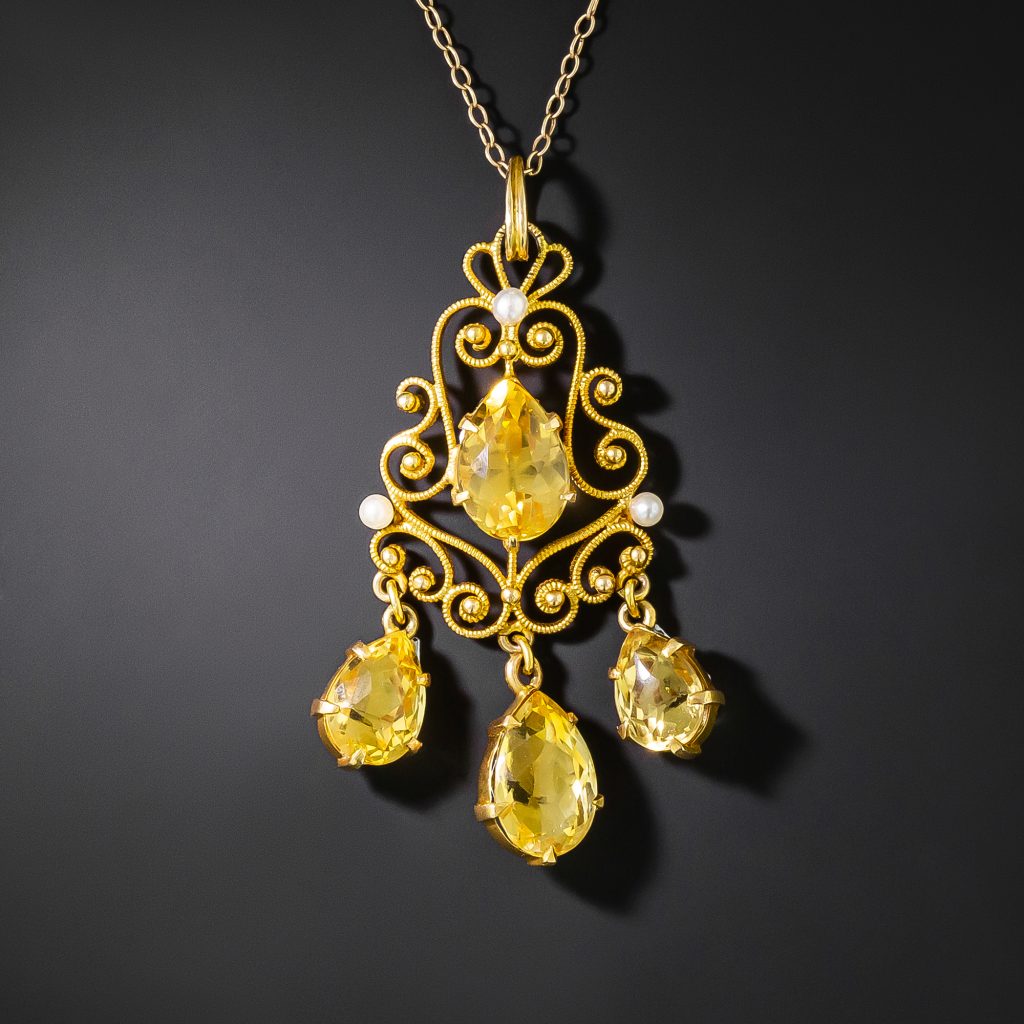
2/13 Victorian lavaliere necklace featuring four oval brownish-yellow citrines (7.75 ctw), seed pearls and tiny gold beads, hand-crafted in 14K gold, circa 1900. (Photo: Lang Antiques)
It is a variation of quartz (silicon dioxide) with the formula SiO2. Unlike pure quartz, which is colourless, citrine comes in a range of yellow to orange tones, which are due to trace impurities of iron in the crystal structure.

3/13 Contemporary citrine, carved by Walter Ferreira Lopes, offered by True Blue Opals & Gems. (Photo: Walter Ferreira Lopes)
“Natural, untreated citrine is relatively rare,” says Sally Patel of QLD-based True Blue Opals & Gems. “The most desirable colours are saturated golden hues with orange flashes, while the reddish tones are called Madeira citrine.” Patel adds that citrine is also a favourite of gem carvers, whose works are collected as gem art.

4/14 Citrine was used in a variety of upmarket collections including this ‘Bird on a Rock’ brooch, featuring citrine, sapphire, and diamonds by Jean Schlumberger for Tiffany, which sold at Christie’s in 2021 for nearly US$32,000. (Photo: Christie’s)
Citrine is popular in a wide variety of jewellery designs. In the fine jewellery category, Parisian jeweller Lorenz Baumer uses the yellow-orange gem in some of his intricate nature-inspired pieces. Tiffany has used citrine in several of its iconic creations.
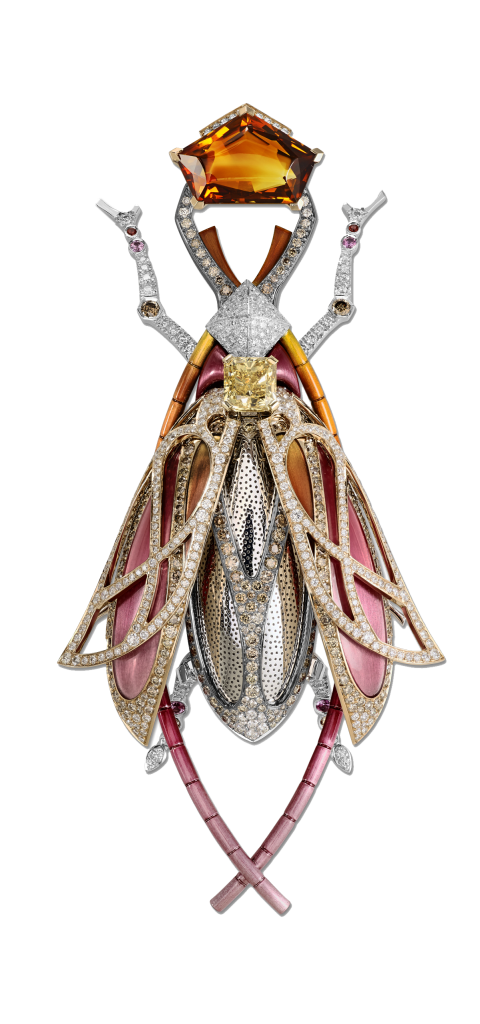
5/13 This whimsical ‘Scarabée d’Automne’ brooch by Lorenz Baumer features a 9.31-ct citrine accented by white, yellow and chocolate diamonds, pink and orange sapphires set in gold, enamel, and aluminium.
Most of the gems on the market today are formed by heating amethyst and smoky quartz, a process that converts their colours into the desired lemony and golden honey tones. Yet, in some deposits, amethyst has been partially or entirely changed to yellow citrine because of natural heating. Interestingly, amethyst and citrine are sometimes found together in the same crystal, which is called ametrine.
The sunny gem is found in a variety of countries around the world, but the main sources are in South America.
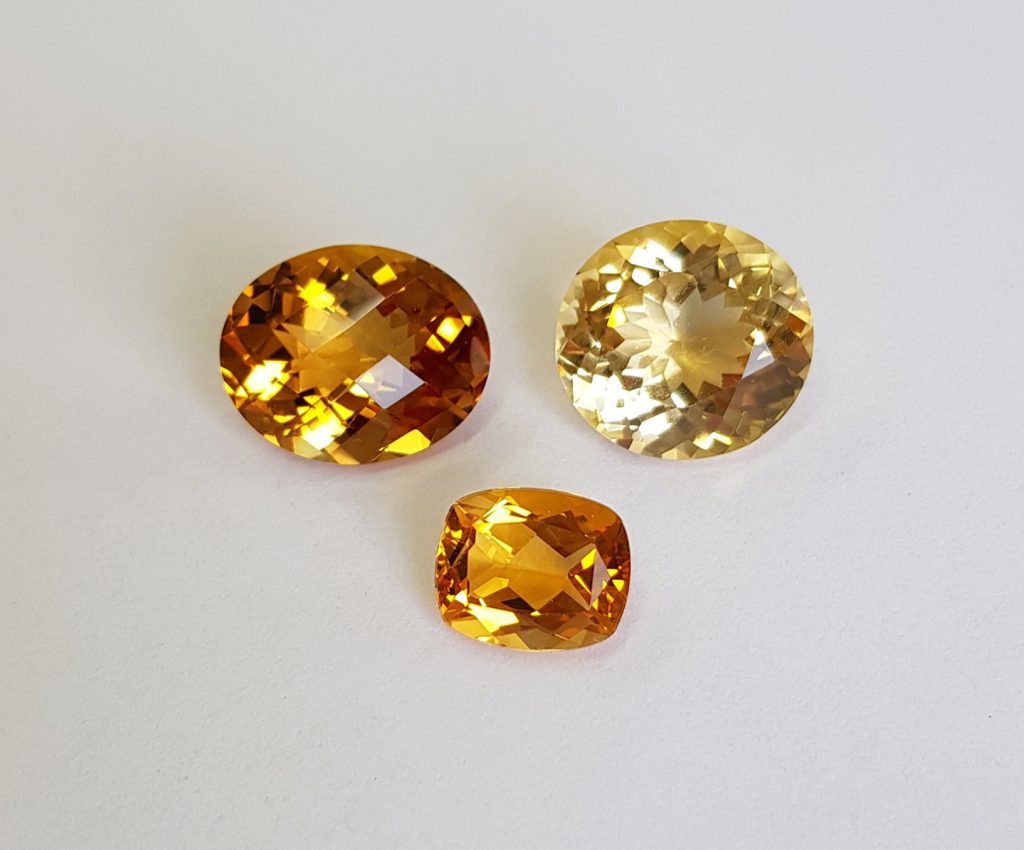
6/13 Three shades of citrine, 9.68-ct (left); 3.53-ct (middle); 10.44-ct (right) from Hamid Bros. (Photo: Hamid Bros.)
“It’s a steady seller,” remarks Grant Hamid of Melbourne-based Hamid Bros, “and is generally produced in calibrated sizes in small rounds, ovals, emerald cuts, pear shape up to larger individual pieces.” For prices, he states that they “have remained relatively constant due to new deposits of amethyst from Africa entering the market,” explaining that buyers can purchase a large gem for a relatively inexpensive price compared to other yellow gems.
Enticing topaz
As with citrine, the legends of topaz date back centuries. The Romans believed it would bring good luck and protect the wearer from harm. In the Middle Ages, it was thought to cure a cold and ward off bad luck, while having calming energies. A hard fluorine aluminium silicate [Al2SiO4(F,OH)2], its name comes from Old French (Topace), Latin (Topazus) or Greek (Topázios).
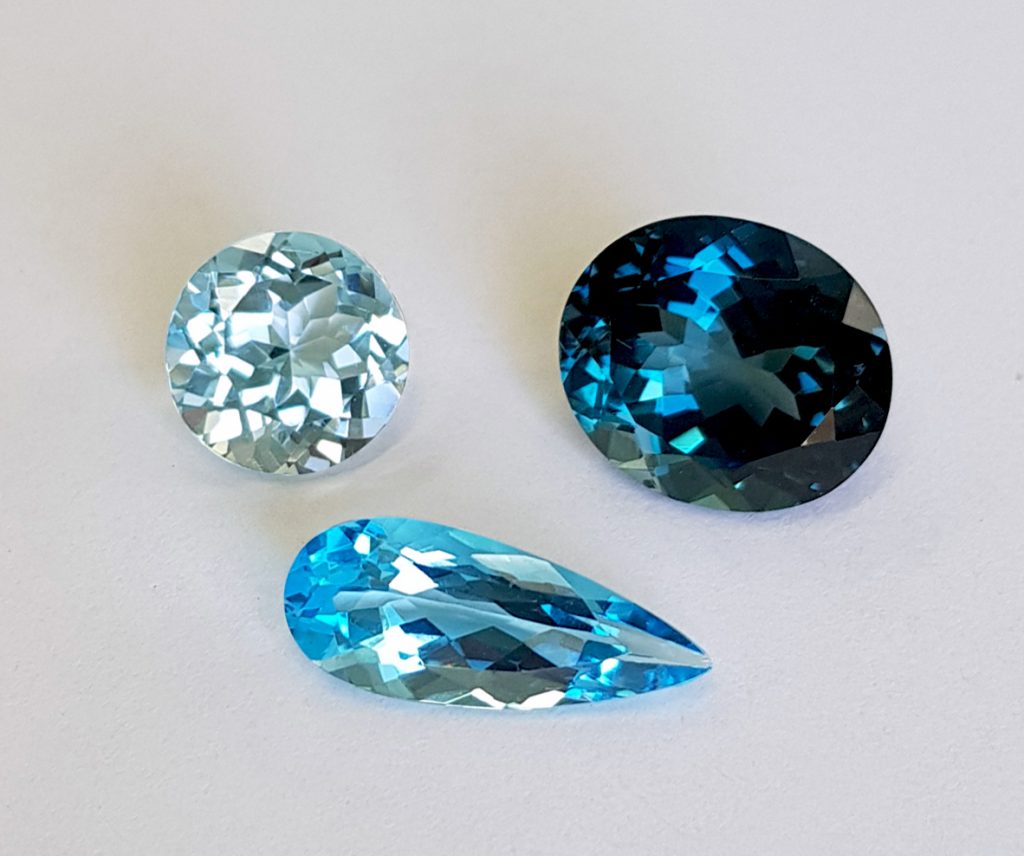
7/13 Examples of three hues of blue topaz: 4.34-ct Sky Blue (left); 4.23-ct Swiss Blue (middle); 10.05-ct London Blue (right) from Hamid Bros. (Photo: Hamid Bros.)
A relatively common gemstone, topaz is found in many countries, with Brazil one of the largest suppliers. In its natural state, topaz is colourless, but it takes on different tones due to trace element impurities. The rare red, pink and violet shades occur when chromium replaces aluminium in the crystal structure. The yellow, brown and blue hues are created by imperfections at the atomic level.
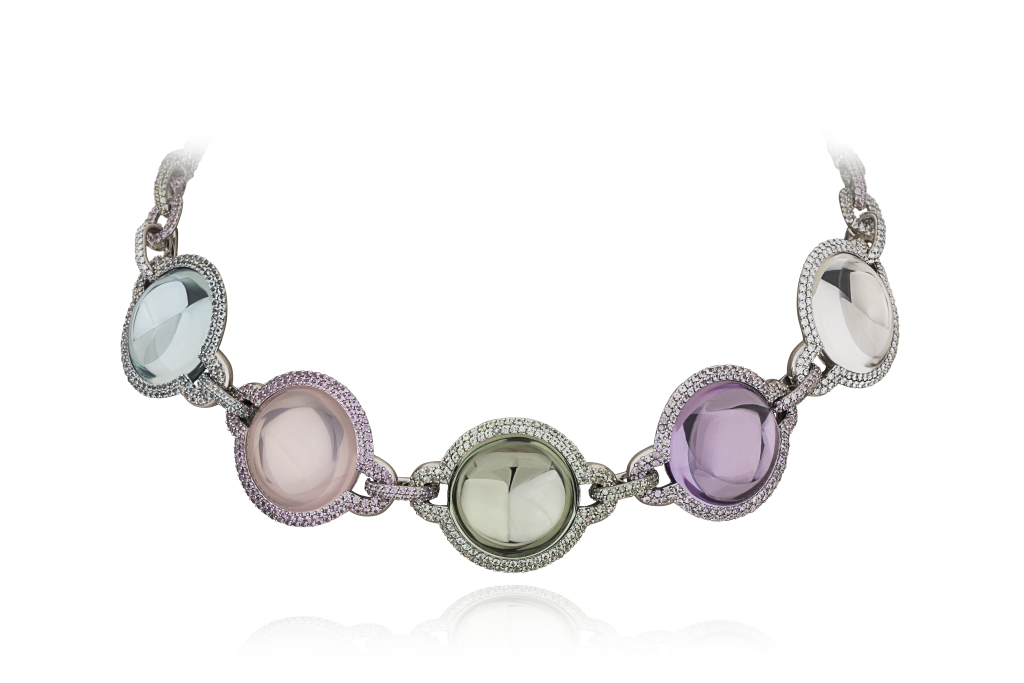
8/13 ‘Candy Bracelet’ featuring a pale shade of blue topaz combined with various colours of quartz (colourless, pink, prasiolite, amethyst) with sapphire and aquamarine accents by Cris Porto. (Photo: Cris Porto)
“Since the gem in its natural state is usually colourless, the industry heats topaz to obtain the fashionable yellow-orange colours while using a different treatment to obtain the popular blue tones,” explains Patel, adding that this makes the gem available to a wider range of customers. Today, blue is the most widespread colour.
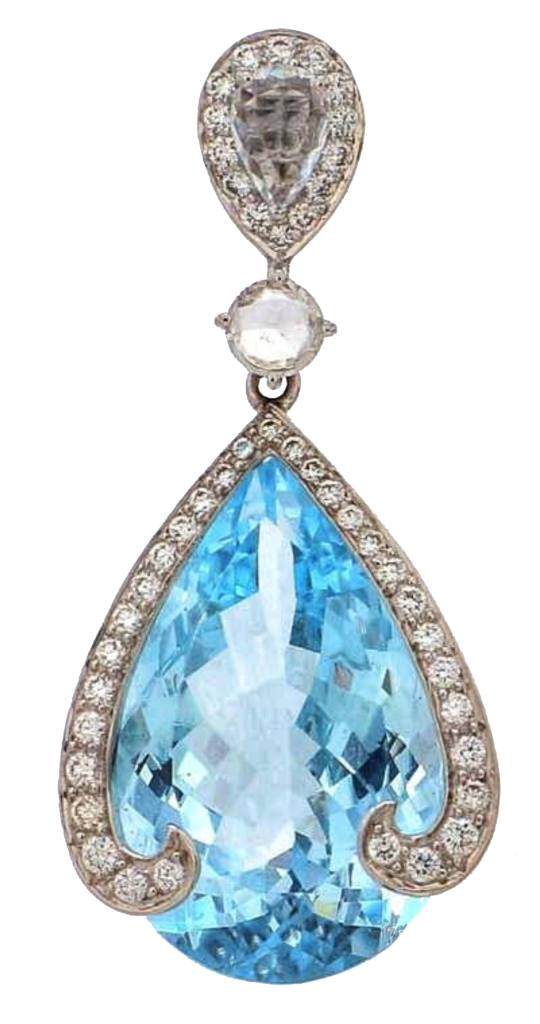
9/13 Blue topaz and diamond pendant in 18K gold by Ankit Malpani. (Photo: Ankit Malpani)
Because natural blue is so rare, gemmologists developed techniques in the late 1940s to convert the colourless crystals to different shades of blue by subjecting the gem to radiation. Although topaz is not the only gem to be irradiated to change its colour, controversy erupted some years ago because the process makes the gem slightly radioactive.
Out of concern for consumer safety, the U.S. Nuclear Regulatory Commission and other similar bodies worldwide require the stones to be set aside for a few months after irradiation to allow the radioactivity to decay. Distributors of the irradiated stones are licensed by the NRC, and they must conduct tests to ensure that the radioactivity is below potential risk levels before the stones go to market.
The treatment produces several shades of blue topaz and today, Hamid notes, “blue topaz is quite plentiful in Sky, Swiss and London Blue tones.”
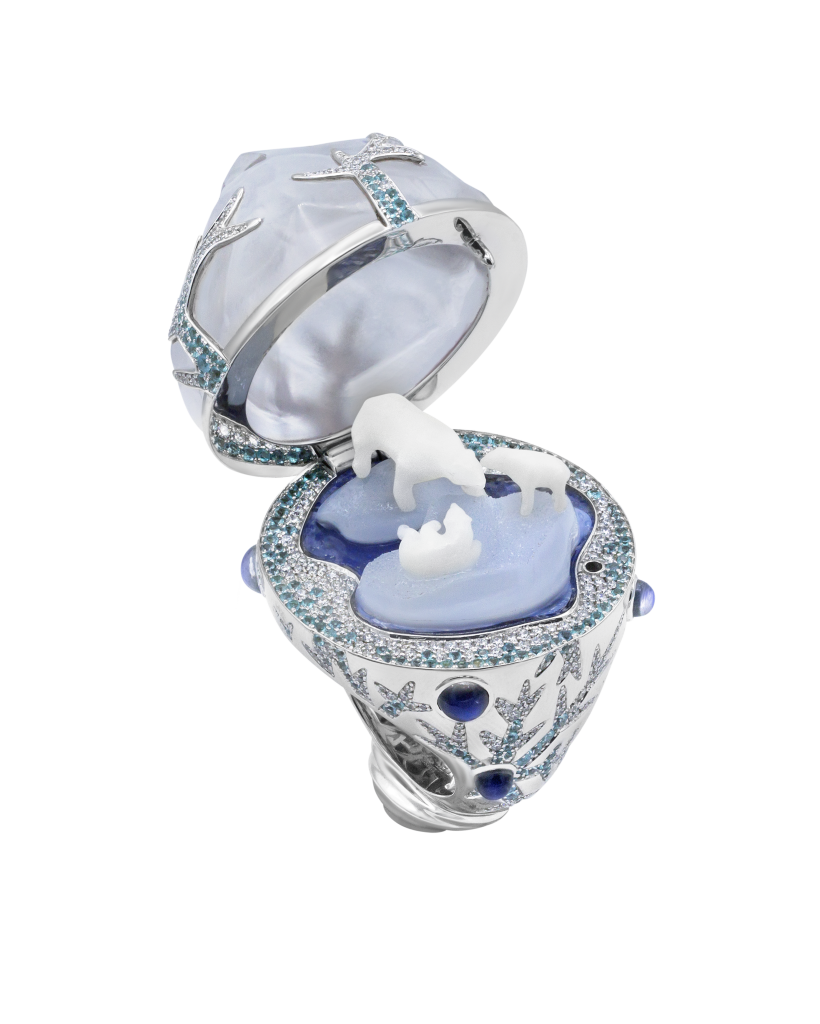
10/13 Alessio Boschi uses 75.51cts of natural white topaz as the top of his statement-making ‘Melting Arctic’ ring, which features diamonds, Paraiba tourmaline, moonstones, lapis lazuli, drusy and carved tagua-nut polar bears in 18K gold. (Photo: Alessio Boschi)
Brazilian designer Cris Porto appreciates blue topaz for its various hues. “Topaz offers a variety of colour choices and can be used either alone or in combination with other gemstones,” she states. Her recent Candy Collection features several pastel gemstones in custom cuts, including blue topaz, sapphires and quartz. “For both pastel and vivid blues, topaz works perfectly.”
Another aficionado of blue topaz is Jaipur-based designer Ankit Malpani, who is also known for his custom cuts. He relates that blue is the favoured topaz colour of his clients, not only for its beauty but also for its accessible prices. His choice of whether to use light or dark hues or a combination is determined by the design.
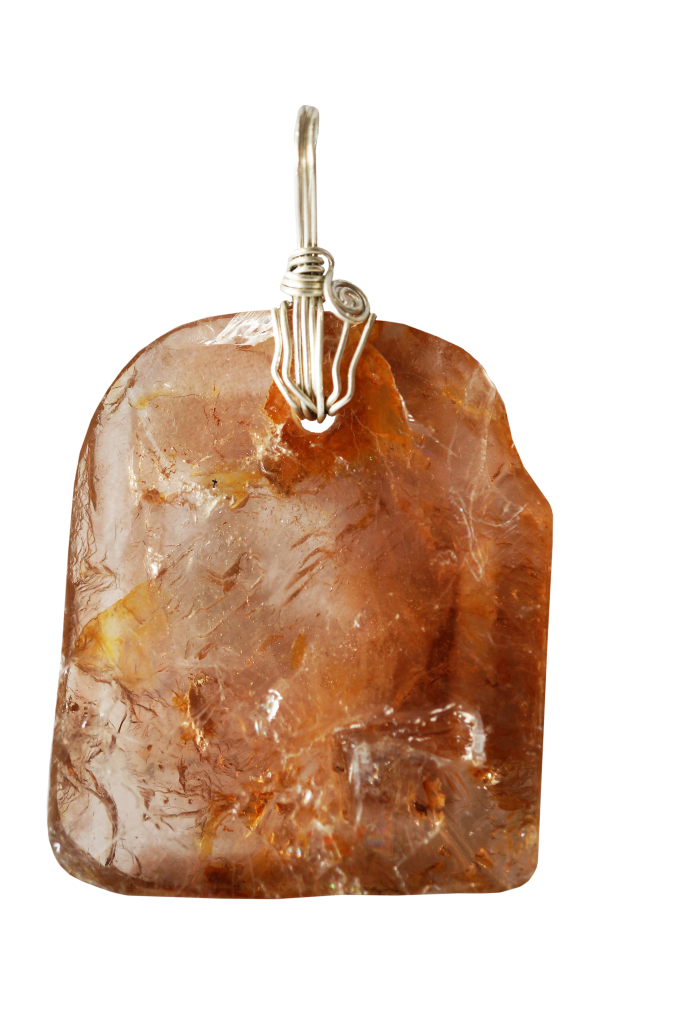
11/13 In the ‘Natural Crystals’ collection is this untreated 251.50-ct Russian champagne topaz crystal with sterling silver wire wrap by Helen Serras-Herman. (Photo: Gem Art Center)
Although heated topaz is widely available, several jewellers prefer it in its natural state. Among them is Helen Serras-Herman of Arizona-based Gem Art Center. “I have used natural white/blue topaz crystals from Brazil for my gem art and natural champagne colour topaz from Russia for jewellery. I love the natural zoning in these crystals.”
A natural but rare form of the gemstone is imperial topaz, which was discovered in the Ural Mountains in Russia in the 17th century and named after the royal family. In the 18th century, this same type was discovered near the Brazilian town of Ouro Preto, which is now the major source of the gem. Miners continued using the name imperial topaz for this material.
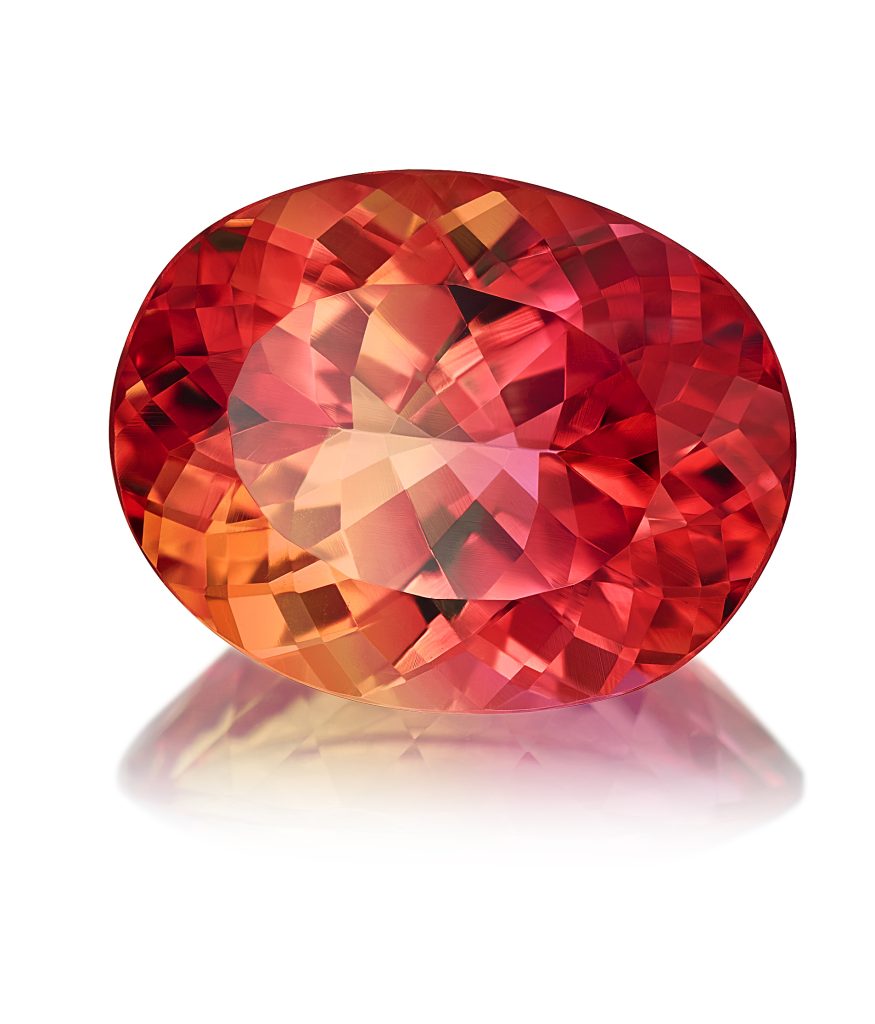
12/13 A brilliant rare 4.82-ct oval Brazilian imperial topaz from Constantin Wild. (Photo: Constantin Wild)
“While ‘imperial’ topaz originally referred to pink topaz from Russia, the trade term today is more closely associated with reddish-orange to sherry-coloured material found in Brazil,” explains Edward Boehm, CEO of Tennessee-based gem supplier, Raresource. “The rarer colours of pink, purple and red are typically referred to using their hues to differentiate them from other imperial topaz of mixed colours and may be classified as ‘precious’ topaz.”
Constantin Wild, owner of his eponymous German brand, has been dealing in Brazilian imperial topaz since the 1980s. “Imperial topaz is beautiful with magical colours, good hardness, and is brilliantly sparkling. It is a connoisseur gemstone.” Because of its rarity and limited production, Wild confides that prices are high and will continue to rise. He notes that the most popular cuts are the classics such as oval, cushion and pear shapes, which “have timeless style regardless of fashion trends.”
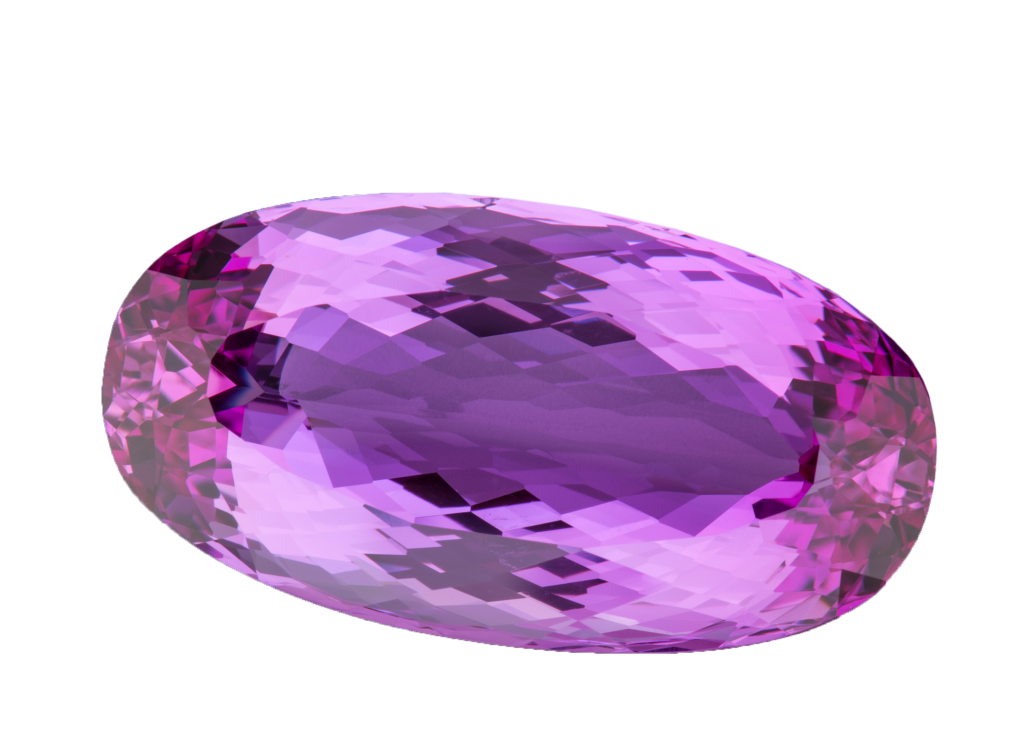
13/13 A very rare 37.63-ct oval vivid ‘pink’ topaz from Brazil from Raresource. (Photo: Robert Weldon)
Whether the warm yellow and golden tones of citrine or the cooler blue colours of topaz, or even the very rare hues of imperial topaz, there is a place for them all, as they are the perfect birthstones for November.
Read below for related stories: